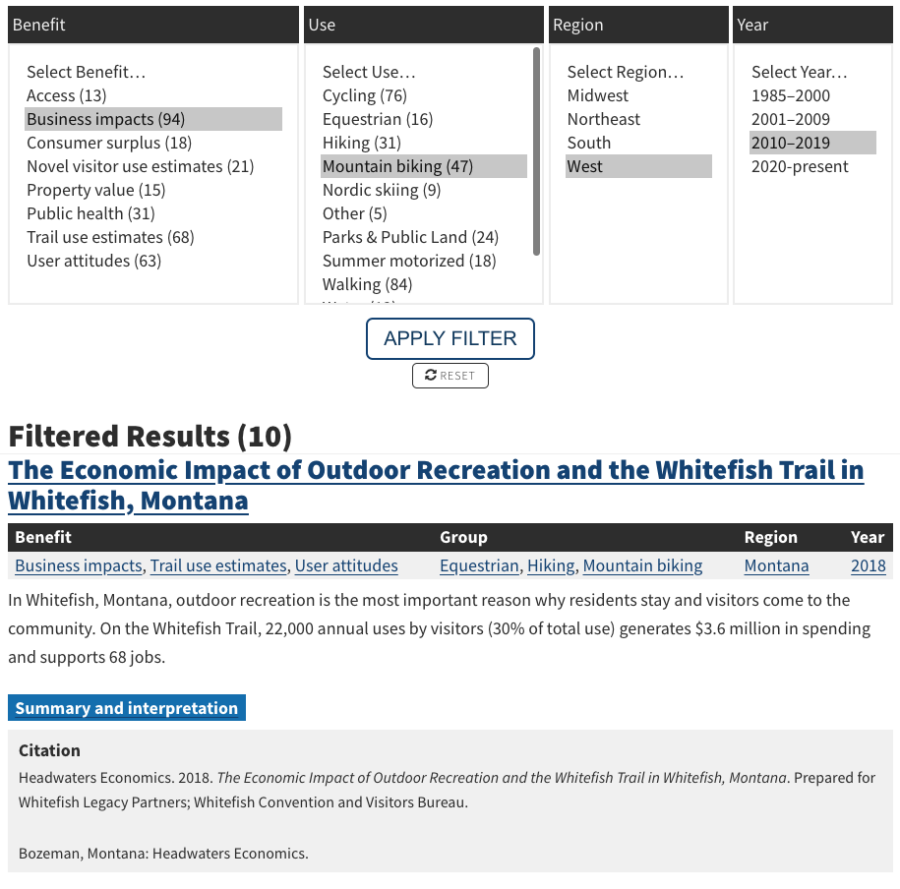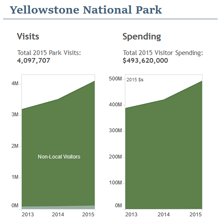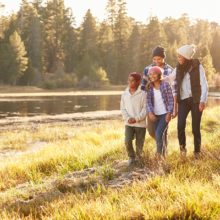Trail access can play a significant role in quality of life and economic well-being. In fact, a growing number of studies are examining the many ways that trail projects yield community benefits that extend well beyond individual trail users.
To support more investments in trails and pathways, Headwaters Economics has created a free, curated collection of nearly 200 high-quality studies that measure the wide-ranging benefits that trails bring to communities. These benefits can include increased public health, quality of life, and economic diversification that brings new jobs and businesses to places with trail access.


The Library of Trails Benefits offers a searchable, easy-to-use interface that can identify research conducted over the past several decades in communities across the United States. Users can search for research about types of benefits, from job creation to equitable access. Searches can also target different trail uses such as hiking, motorsports, skiing, cycling, and more.
In 2024, Headwaters Economics added 44 new studies to the library. We also expanded the searchable research categories to include equity of trail access, as well as novel data collection techniques that can improve how trail benefits are measured.
If you know of more research that should be considered for the Trails Benefits Library, please contact us.
Below we offer more detailed descriptions of benefit categories included in the Trails Benefits Library.
This category of studies in the Trail Library includes research that explores how trails can boost local economies through job creation, tourism expenditures, and overall economic output.
Business impacts include business revenue, employment, employee earnings, and the ripple effect of visitor spending as employees and business owners spend their earnings, and local and state governments receive more tax revenue. Learn more about trail business impacts.
Trails can improve the quality of life of community members, especially when trails can be used for both recreation and transportation. This category in the Trails Library includes research that shows how and why people are using trails, how trail amenities make communities attractive to residents, and more. Learn more about quality of life impacts.
Community leaders are increasingly looking for ways to ensure that as many people as possible have access to trails. This category in the Trails Library includes studies that have measured how access to trails and participation differs across groups of people, and how access can vary widely. Understanding disparities in access for people of color, people with disabilities, people with low income, or other social vulnerabilities can help prioritize investments in parks and trails to better serve community members. Learn more about equity and access.
Accurate data about trail usage can make the case for infrastructure investments but can be difficult and costly to obtain. This category in the Trails Library includes studies that are innovating new ways to count trail use when traditional methods are inconsistent or unavailable. Leveraging cell phone and social media data are promising examples that have been found to yield accurate results, especially when paired with on-site trail counters.
Community trails have been shown to improve public health by increasing residents’ levels of physical activity and providing safer transportation routes for pedestrians and cyclists. This category of research in the Trails Library illuminates how trails can encourage physical activity, including among people with low incomes, people with lower education levels, or the elderly. Learn more about public health impacts.
Homes near community trails often have higher property values, with a price premium ranging from 5% to 10% in most studies. Research has also found that those who opposed a trail prior to construction generally find a trail to be a much better neighbor than they anticipated. This category in the Trails Library can help community leaders discover property value impacts that have been studied across the country. Learn more about property value impacts.
The “legal issues” category in the Trails Library includes studies that can help private landowners, public land managers, land trusts, trail advocates, and others better understand the legal responsibilities associated with developing and maintaining trails. Risks and responsibilities vary widely depending on the location and type of trail use. Legal issues have been addressed in all 50 states and are well studied. Learn more about legal issues.
Acknowledgments

Chloe Braedt
Chloe Braedt is a recent economics graduate from Lewis & Clark College in Portland, Oregon. She analyzes environmental and economic data to help communities protect spaces for wildlife and outdoor recreation, address natural hazards, and build economic resilience.







